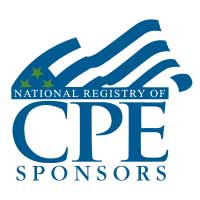We regret to inform you that we currently don't have any sessions scheduled for this course.
Please let us know your preferred date and venue, and we'll contact you soon.
INTRODUCTION
This training course will emphasize on the types of overcurrent protection devices and the power transformers. It will elaborate on the characteristics and operations of all types of circuit breakers including the interpretation of the time current curves. As for the MV and HV circuit breakers, selection of digital numerical protection relays incorporating the instrument transformers. Routine tests for circuit breakers are essential for safe and secured operations.
Power transformers presence is very significant in all AC electrical transmission and distribution systems. Understanding the significance of the components in a power transformer is essential to ensure a continuous safe operation. Transformer tests are now executed with intelligent measuring and diagnostics instruments. In addition dedicated protection relays for transformers are important to detect any anomalies in the transformers.
This GLOMACS Circuit breakers & Switchgears (LV, MV, HV) training course will highlight:
- Operations and salient features of all types of circuit breakers
- Interpretation of the time current curves
- Testing and protection of circuit breakers
- Characteristics of power distribution and transmission transformers
- Routine tests of power transformers
Objectives
At the end of this training course, you will learn to:
- Understand the types and characteristics of circuit breakers
- Explain the time current curves related to the L,S,I and G curves
- Analyse the relevant testing methods
- Comprehend the differences between the transmission and distribution power transformers
- Digital protection for power transformers
Training Methodology
This training course will ensure that participants will receive a thorough training on the subjects covered by the training course outline with the instructor utilising a variety of proven adult learning teaching and facilitation techniques. Each training course participant will receive a copy of the comprehensive training course notes. The presenter will outline and discuss the topics using computer displays, videos and power point presentation.
Organisational Impact
On successful completion, the organizational impact would be:
- Develop a structured outlook and understanding of overcurrent protection devices
- Design a systematic operational of the circuit breakers related to the time current curves
- Correct selection of protection and tests for the circuit breakers
- Understanding the operations and construction of the power transformers
- Familiar with routine tests for transformers
Personal Impact
Upon successful completion of this training course delegate will be able to:
- Understand the various types of circuit breakers operational principles
- Identify the co-relation of the L, S, I and G curves
- Appreciate the methods of testing and protection of circuit breakers
- Comprehend the significance of the power distribution and transmission transformers
- Ability to perform the relevant routine tests and digital protection of the power transformers
WHO SHOULD ATTEND?
We encourage the staff involved in the operation, planning, design, and maintenance of power systems to attend this training course. This GLOMACS Circuit breakers & Switchgears (LV, MV, HV) training course is suitable to a wide range of professionals but will greatly benefit:
- Project Engineers/Managers
- Electrical Engineers/Technicians
- System Operators
- Design Engineers
- Asset Engineers/Managers
DAY 1
Importance and merits of overcurrent protection devices
- Overview of overcurrent protection devices
- Common electrical faults and the consequences
- Fuses types and characteristics
- Interpretation of the fuse operation sequence and waveform
- Selected AC and DC fuses
- Fuse chart and classifications
DAY 2
Introduction to low voltage (LV) circuit breakers
- Construction and ratings of miniature circuit breakers (MCB)
- Operation of the molded case circuit breaker (MCCB)
- Characteristics of air circuit breaker (ACB)
- Introduction to the time current curves
- Application and interpretation of the long time, short time, instantaneous and ground fault curves
- The electronic trip unit characteristics
DAY 3
The medium voltage gas insulated vacuum circuit breakers
- Arc quenching principles of circuit breakers
- Sulfur hexafluoride (SF6) gas circuit breaker interrupters
- SF6 gas leakage detection instrument and tests
- Dew point test and purity tests
- Merits and operation of the vacuum circuit breaker (VCB)
- Testing vacuum circuit breakers
DAY 4
The high voltage circuit breakers construction and testing: Live Tank and Dead Tank
- Air insulated substation (AIS) high voltage circuit breakers
- Live tank and dead tank circuit breakers
- Gas insulated substation (GIS) circuit breaker designs
- Hybrid circuit breakers
- State-of-the-art high voltage vacuum circuit breakers
- Vacuum interrupter applications and tests
DAY 5
Instrument transformers and numerical protection relays
- Types and ratings of current transformers for protection and metering
- Voltage instrument transformers and the operations of the capacitance voltage transformer (CVT)
- Non conventional instrument transformers (NCIT)
- Introduction to digital numerical protection relays
- Application of protection relays in electrical equipment
- Understanding IEC 61850
DAY 6
Eco-friendly circuit breakers and partial discharge
- Greenhouse gases (GHG) and global warming potential (GW)
- Replacement of the greenhouse gas SF6 in circuit breakers
- Types of eco-friendly gases and SF6 free gases
- Construction of dry air circuit breakers
- Clean air insulation for circuit breakers
- Partial discharge in circuit breakers
DAY 7
The role of power transformers
- Tyes and construction of power transformers
- Essential components of the power transformers
- The operation of Buchholz relay
- The conservator and dehydrating breathers
- Maintenance free dehydrating breathers
- Cooling of power transformers
DAY 8
The transmission and distribution transformers
- Vector group of power transformers
- Significance of impedance percentage
- On-load tap changer characteristics
- Sweep frequency respond analysis
- Power transformers protection
- Digital smart transformers for transmission and distribution
DAY 9
The eco-friendly power transformers and relevant tests
- Eco-friendly oil for power transformers
- Dissolve gas analysis
- Breakdown voltage test
- Turn ratio test
- Winding resistance test
- Partial discharge in power transformers
DAY 10
Intelligent testing, measuring and diagnostics instruments
- Remote monitoring of power transformers
- The Testrano 600 digital tester for power transformers
- Interpretation of the DGA with Duval’s Triangle
- Introduction to gas insulated transformers
- Case studies and discussion
- Wrap-up session
- On successful completion of this training course, GLOMACS Certificate will be awarded to the delegates
- Continuing Professional Education credits (CPE) : In accordance with the standards of the National Registry of CPE Sponsor, one CPE credit is granted per 50 minutes of attendance
Endorsed Education Provider
GLOMACS is registered with the National Association of State Boards of Accountancy (NASBA) as a sponsor of continuing professional education on the National Registry of CPE Sponsors. State boards of accountancy have final authority on the acceptance of individual courses for CPE credit. Complaints regarding registered sponsors may be submitted to the National Registry of CPE Sponsors through its website: www.NASBARegistry.org
GLOMACS Training & Consultancy
Typically replies within an hour


